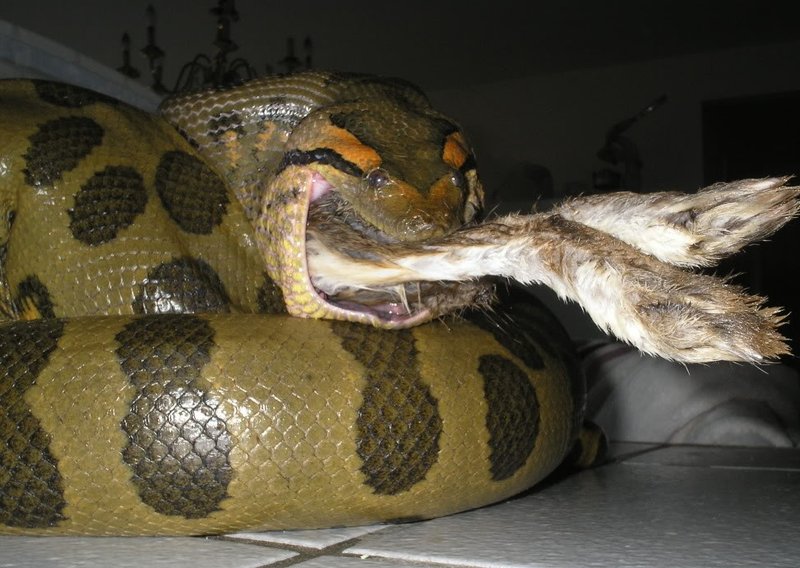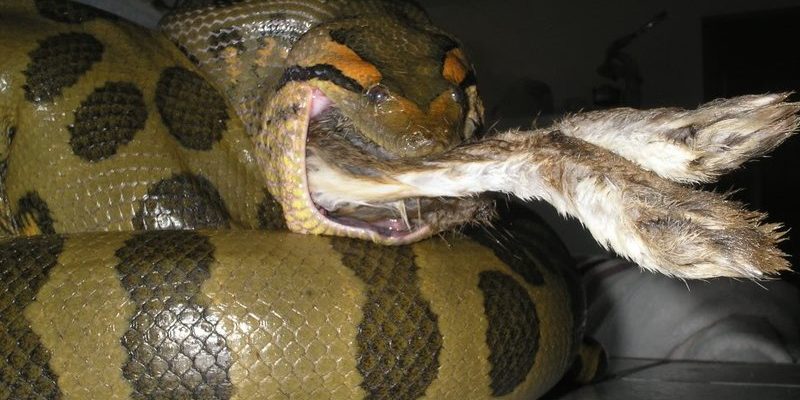
Let’s dive into what makes the green anaconda so fascinating. To put it simply, think of them as the gentle giants of the snake world. They might look intimidating, but the reality is often more complex than the fearsome reputation they carry. So, let’s explore whether this remarkable reptile poses a genuine threat to humans or if they’re just misunderstood monsters of the jungle.
Understanding the Green Anaconda
The green anaconda (Eunectes murinus) is native to South America, primarily found in the Amazon River basin. These snakes are semi-aquatic, spending a lot of their time in swamps, marshes, and slow-moving streams. With their thick bodies and dark green pattern, they can camouflage wonderfully in their environment, making them both impressive and elusive.
You might be wondering how they get such an impressive size. It all comes down to their diet. Anacondas are non-venomous constrictors, which means they subdue their prey by wrapping around them and squeezing until they can’t breathe. Their favorite meals include fish, birds, and even large mammals like deer or capybara. Imagine a snake as thick as a small car! It’s awe-inspiring and a little scary.
The Anaconda’s Relationship with Humans
Now, let’s talk about humans. When it comes to interactions with these snakes, the truth is that most people don’t encounter green anacondas in their daily lives. They prefer to stay hidden, avoiding human contact whenever possible. However, there have been instances of encounters, especially in rural areas where people might wander into their habitats.
Your typical person in city life likely has little to fear from a green anaconda. In fact, they usually only pose a threat if they feel threatened themselves. So, if you ever find yourself in the Amazon, it’s probably best to give them space and let them be. Most attacks are a result of accidental close encounters, and for the snake, it’s a defensive reaction.
Can Green Anacondas Attack Humans?
You might be curious—can green anacondas *actually* attack humans? The short answer is yes, but it’s extremely rare. There have been reports of anacondas attacking humans, usually under unusual circumstances. For instance, if someone accidentally steps on one or gets too close to a nesting female during the breeding season, that’s when things could get dicey.
However, even in these situations, it’s not common for green anacondas to consume humans. They don’t see us as potential meals like they would a capybara. Honestly, their size is intimidating, but they’re not out to get us. This brings us to the importance of respecting wildlife and understanding their behaviors.
What To Do If You Encounter One
If you find yourself face-to-face with a green anaconda, what should you do? First off, stay calm. Panicking can lead to rash decisions. Here’s a simple guide to handle the situation:
- Keep Your Distance: Don’t try to approach or provoke the snake. Simply back away slowly.
- Observe: Take a moment to watch the snake. Often, they’ll slither away if they don’t feel threatened.
- Leave the Area: Once you’re at a safe distance, calmly leave the area and alert others if necessary.
Respect is key here. Just like how you wouldn’t want someone to invade your personal space, the same goes for snakes. Remember, they’re an essential part of the ecosystem and deserve our protection.
Myths vs. Reality
With any large predator, myths and horror stories abound. One common myth is that green anacondas actively hunt humans. This isn’t the case. While they are capable of overpowering large prey, humans just aren’t on their menu.
Another popular story is that they can squeeze you tight enough to crush bones. While they can indeed exert significant pressure, human encounters often result in defensive bites rather than lethal attacks. It’s critical to separate fact from fiction—anacondas aren’t mindless killers; they are simply surviving in their environments.
The Role of Green Anacondas in Their Ecosystem
Anacondas play an important role in their ecosystems. As apex predators, they help control populations of other animals, which benefits the environment. Without these natural checks and balances, certain species could overpopulate, leading to ecological imbalances.
Moreover, they play a part in nutrient cycling. When eaten by anacondas, prey helps enrich the soil through waste products, contributing to plant growth. So next time you think of a green anaconda, consider their ecological impact. They’re not just snakes; they’re a vital part of their ecosystems.
The Bottom Line: Are They Really Dangerous?
So, can the green anaconda be dangerous to humans? The evidence suggests that while they have the physical capability to harm us, the actual occurrences are quite rare and usually stem from misunderstandings. Overall, they prefer to avoid confrontations altogether.
By respecting these magnificent creatures and understanding their behavior, we can coexist peacefully. Always remember that nature has its own rules, and as humans, it’s crucial we adapt to them, not the other way around.
In conclusion, green anacondas aren’t on the hunt for humans; they’re simply trying to live their lives in the wild. With a little awareness and respect, we can appreciate these incredible snakes without unnecessary fear.

